Up Next
Jess Valice’s Blank-Eyed Figures Are Taking the Art World by Storm
The neuroscience student turned art world wunderkind's first of two solo shows with Almine Rech is currently on view in New York.
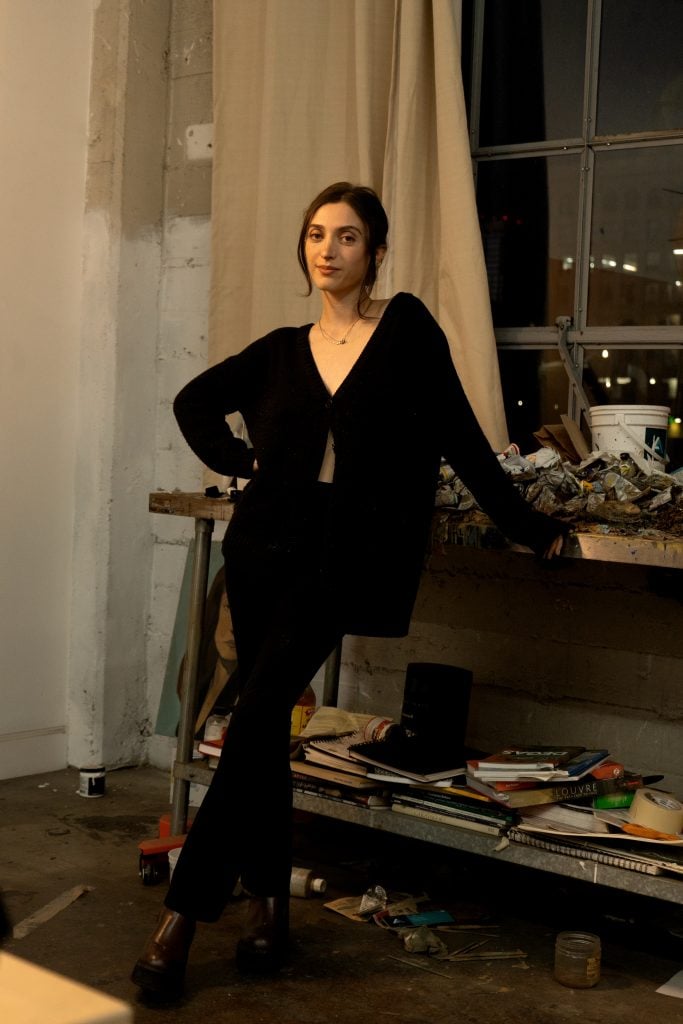
Los Angeles native Jess Valice’s career path as an artist was not always assured. Dissuaded by her parents from going to art school, she instead turned her academic attention to neuroscience, studying at Santa Barbara City College for three years. “I’m prone to putting everything into something I’m fascinated with, and it’s very difficult for me to pursue something that I have zero interest in. It just so happens [other than art] I found interest in neuroscience,” said Valice via video call from her home in Glendale, accompanied by her dog Joey.
Valice’s interest in neuroscience was specifically focused on the chemical dopamine and its effects—whether there was too much, not enough, and the spaces in-between. “It sparked my interest into understanding the brain, and dreams. I went down this crazy rabbit hole and I ended up studying it and learning so much about the world—because you have to take all the biology courses, physics courses, math courses. It’s just incredibly beautiful. And I think that it goes hand in hand with art.”
Despite devoting much of her time to studying, Valice continued to pursue her art on the side, until the scientific pursuits threatened even the little time she had left to paint. “I realized after a while, if I’m going to put all of my efforts into being a doctor, I can certainly try to pursue painting, so here I am.”
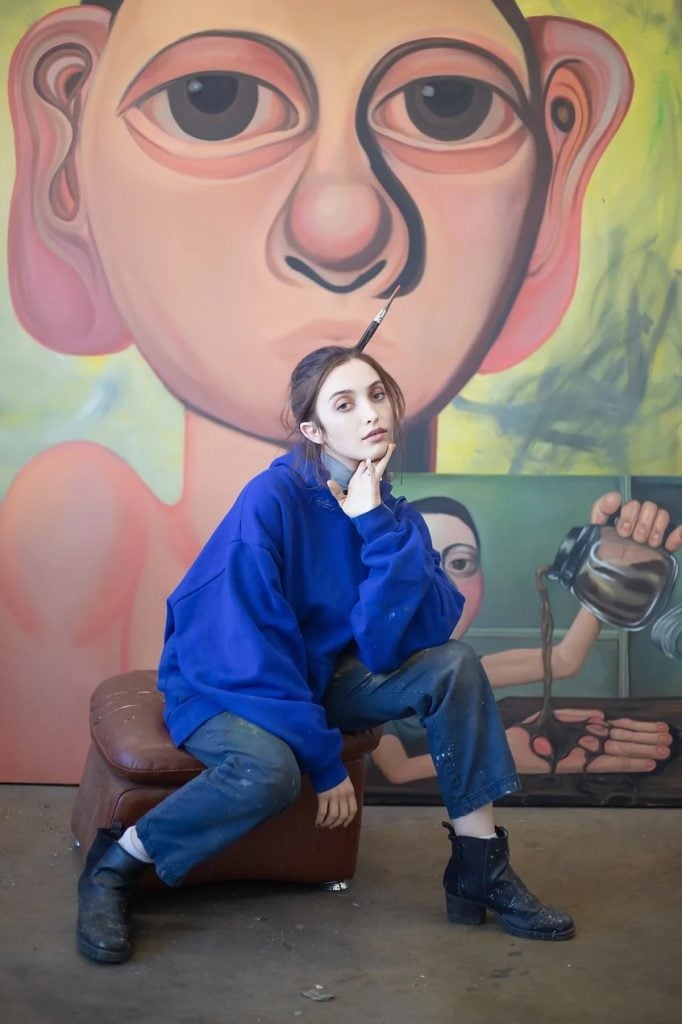
Artist Jess Valice. Courtesy of Almine Rech.
Though the change in trajectory—from a career in the hard sciences to an artist—may seem dramatic from outside, Valice doesn’t seem to see it as such. “I hope more people learn to understand that science is incredibly informing, and neuroscience and physics are some of the most important of the sciences. As an artist, you are creating, and you’re doing this because of all of that, and to understand the way that life works and the work that you create, you’re representing your ideas and your perspectives and your interests onto a canvas or whatever your media may be, it’s because of the way that your brain works. It’s because of the world around you, and I think that my work is very much based off the interest of the mind.”
The change of course has proven immensely fruitful, and Valice was able to gain a toehold rather quickly—despite the lack of art world connections. “The pivot was kind of quick. I dropped out and then I started assisting an artist in the same building that I’m in right now, with Canyon Castator. I worked at so many restaurants in that time and then eventually just dropped them all at once around the time he said that they were turning the building into studios and asked if I wanted one.”
The building Valice is referring to is now known as Mohilef Studios in Downtown Los Angeles (DTLA), a growing epicenter of emerging and established creative talent that has been spearheaded by Castator. Mohilef proved a potent starting point for Valice. “As an artist, I was just starting out. I was next to an artist who has been making clay works for a long time and I was also next to Austyn Weiner, who is already showing and doing incredible things. And this is her third studio. Austyn was a very supportive studio neighbor and friend and would bring her studio visits into my studio and introduce me. That was the pivot, I mean, that’s how everything really went up from there.”
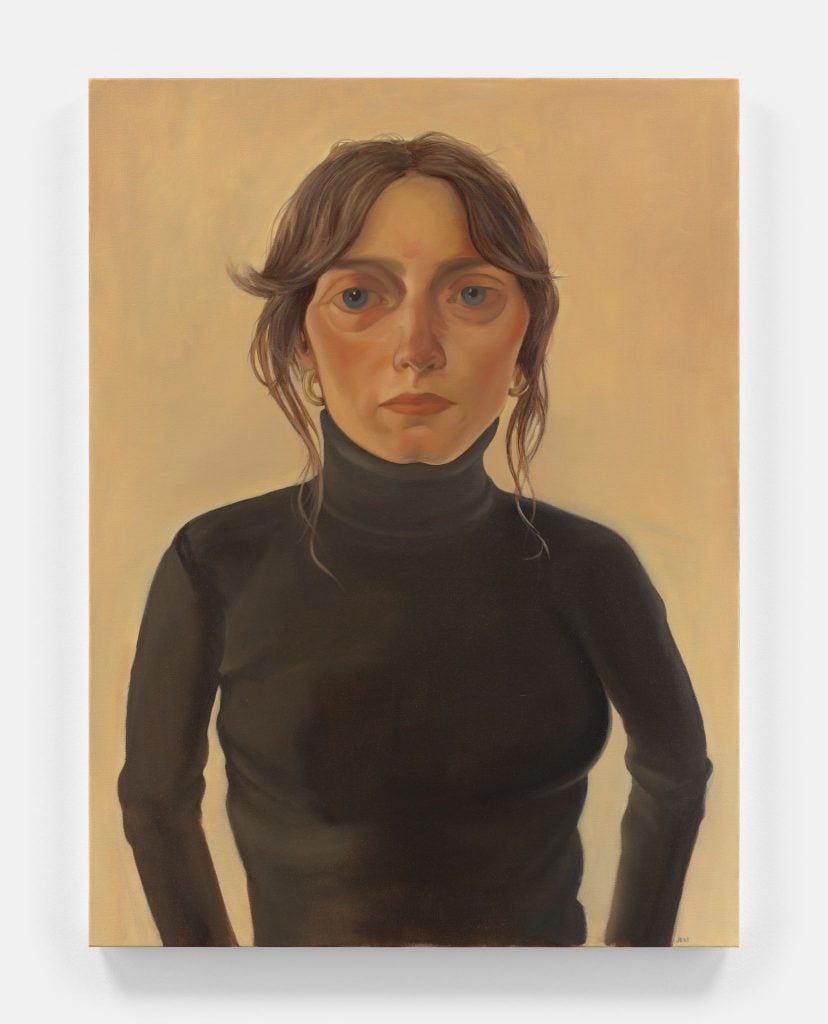
Jess Valice, Ally (2024). © Jess Valice. Photo: Matthew Kroening. Courtesy of the artist and Almine Rech.
And up it went. In 2021 alone, Valice’s work was featured in a number of group shows as well as four solo shows, at ATM Gallery NYC in New York, Carl Kostyál Gallery in Milan, and at Bill Brady Gallery, Los Angeles and Miami respectively. And this month, one of the artist’s biggest shows to date opened with Almine Rech in New York, “Mara,” the first of two slated with the gallery (the second is scheduled for March 2025 at the Paris Matignon location). The show, staged at Almine Rech’s Upper East Side location through April 20, is largely divided into two, with one side showcasing her paintings and the other her drawings.
Within “Mara,” the self-taught artist’s distinctive manner of stylization is apparent, particularly in her rendering of figures that have a “vacancy of expression,” staring blankly and unwavering at the viewer. Valice’s compositions recall, albeit hazily and not easily placed, numerous art historical antecedents while remaining distinctly her own: the dramatization of Fernando Botero, distortions of Pablo Picasso, and the intense gaze found in Renaissance portraits. The artist in fact cites Renaissance art, specifically liturgical works, as an early model and inspiration for her then-burgeoning practice.
Within the figures Valice paints, some viewers have noted recognizing a degree of self-portraiture on the side of the artist. “Gun to my head, yes, I kind of do paint myself. But I think that the interest is in that you learn more about the artist and the work than you do about the figures. That’s the subject of the painting.”
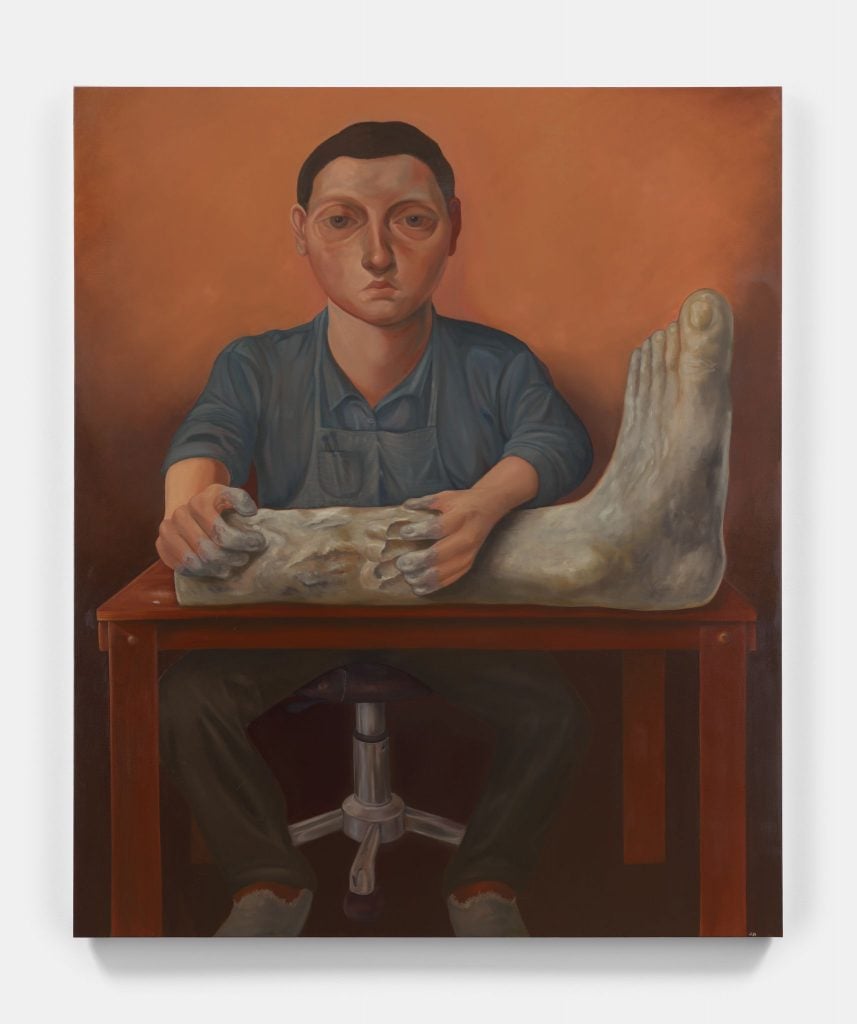
Jess Valice, The sculptor (2024). © Jess Valice. Photo: Matthew Kroening. Courtesy of the artist and Almine Rech.
The works across the show evidence Valice’s considerations of time, the people who inhabit her everyday life, as well as psychological elements. The many figures shown are culled from a photoshoot of sorts, wherein the artist invited a group of old friends from her time in middle and high school that she had largely not stayed in touch with, who have taken their own distinct path through life, some working within creative fields and others far from it. “I invited these people over and I felt inspired by them and putting them into my world, which was a little bit almost narcissistic. A way of living vicariously through them, or them living through me.”
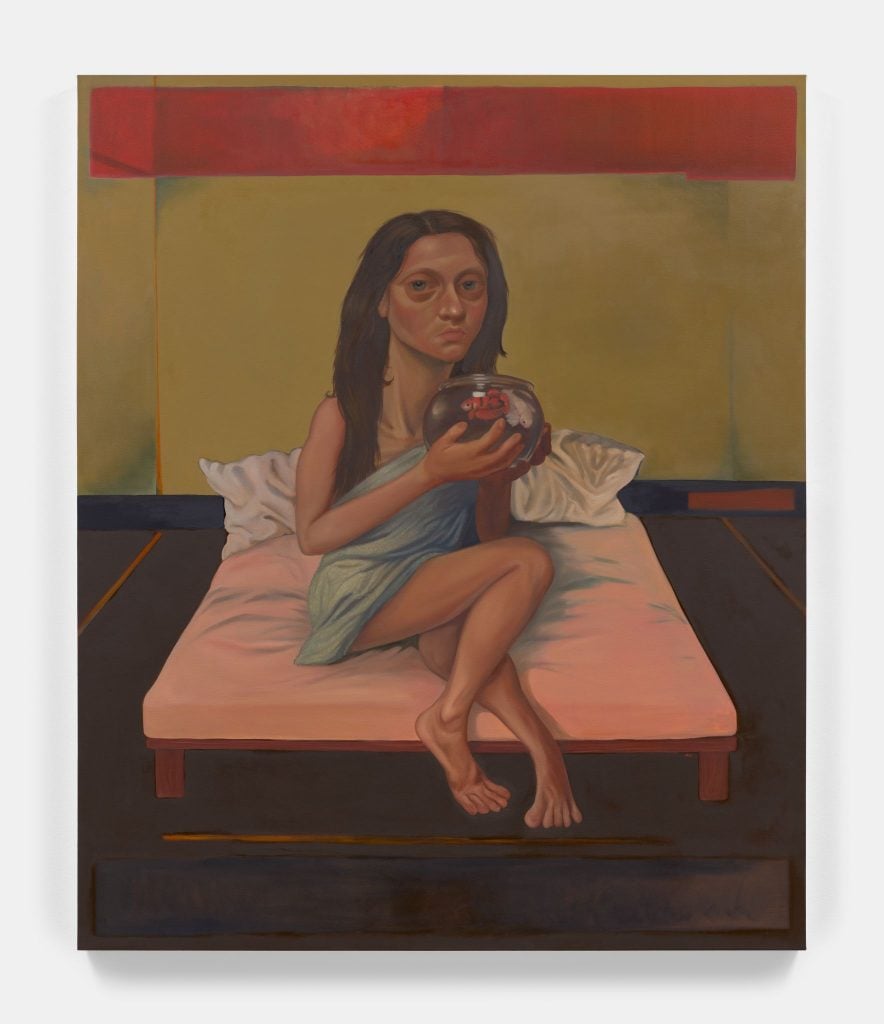
Jess Valice, Mara (2024). © Jess Valice. Photo: Matthew Kroening. Courtesy of the artist and Almine Rech.
Narcissism can be understood as the thematic underpinning of the show’s titular painting, Mara (2024). In it, the figure Mara holds a bowl with two beta fish, which are ordinarily kept separate due to their instinct to fight one another. With her gaze fixed outward and framed by a red ceiling above and dark ground below, she is at once in control of and removed from her context. “Mara is the narcissist. It’s the prince of illusions, the king of lies. It’s also that voice in your head that tells you that you can’t ask questions, you can do everything by yourself, you don’t need help, you know all the answers.”
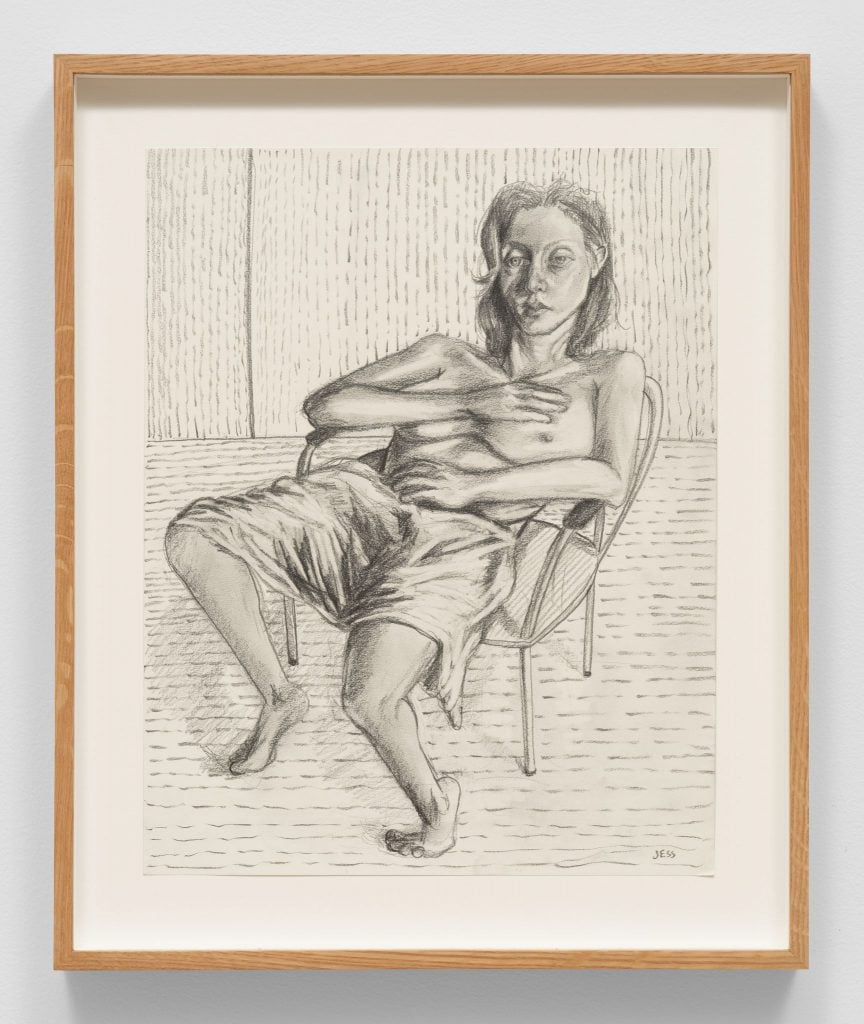
Jess Valice, Self Portrait (2024). © Jess Valice. Photo: Thomas Barratt. Courtesy of the artist and Almine Rech.
While Valice’s paintings convey a strong sense of figurative presence and intense focus through almost every technical element—from the bold color schemes and intriguing compositional arrangements, in the artist’s drawing there is a distinct element of tenderness in the manner of rendering. Whether this is a conscious choice or a result of the difference in medium, Valice’s ability to express internal worlds obliquely yet clearly is brought to the fore. In some instances, the sitters gaze, rather than staring out at the viewer, has wandered off in either reverie or reflection, or to something out of frame that has caught their attention. In others, as much attention has been paid to the background and what it contains as to the figure, such as the content of a living room and the view from a window showing a pond or lake and trees in the distance.
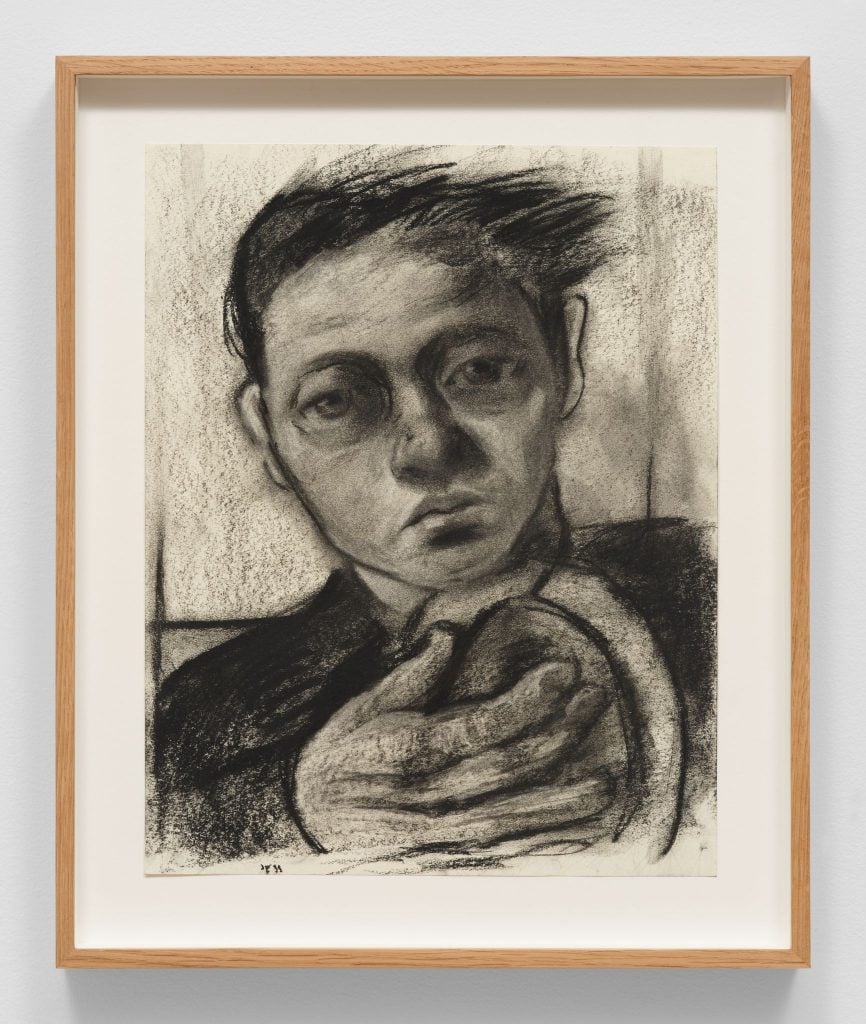
Jess Valice, Sincere Condolences (2024). © Jess Valice. Photo: Thomas Barratt. Courtesy of the artist and Almine Rech.
Together, the paintings and works on paper in “Mara” highlight Valice’s rapid evolution as an artist, and the strong thematic foundations that drive her work. On what she hopes people take away from her work, Valice said, “I just want to make people think, to provoke any kind of thought that is unique to their life, that is the greatest thing that I can take away from anybody viewing my work. And it’s a big ask, but it’s the journey for my work. It doesn’t have to happen every single time, but I could only hope that within the work, every time I finish one, that it does.”





